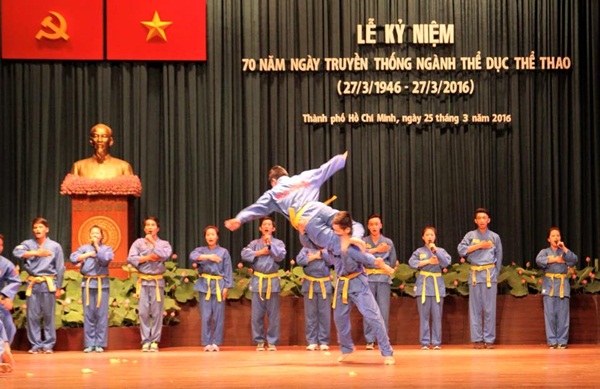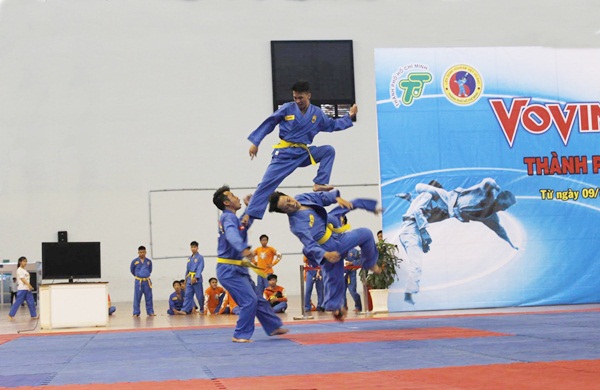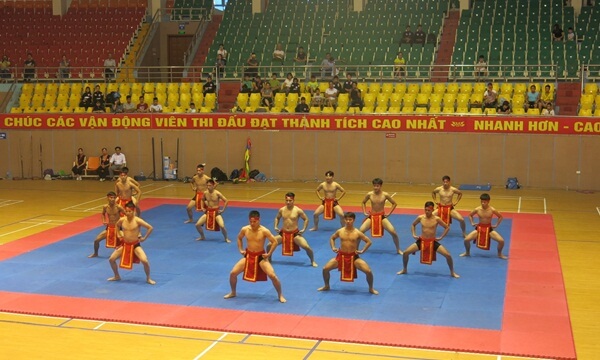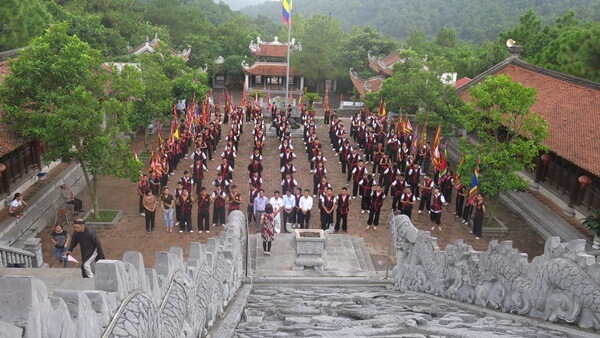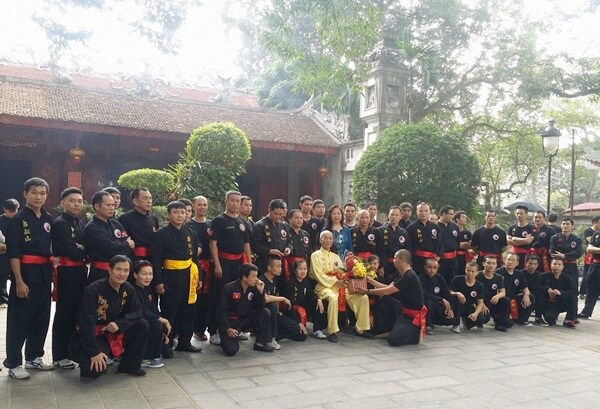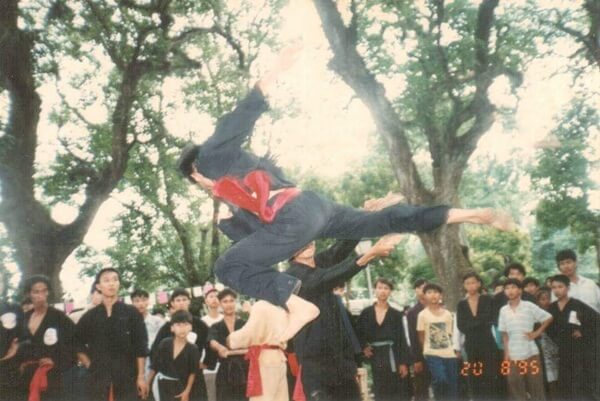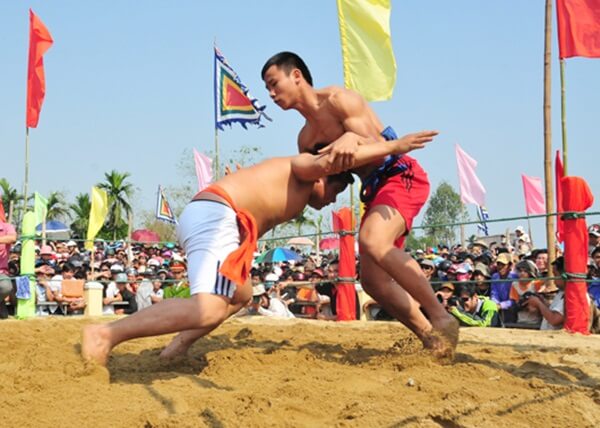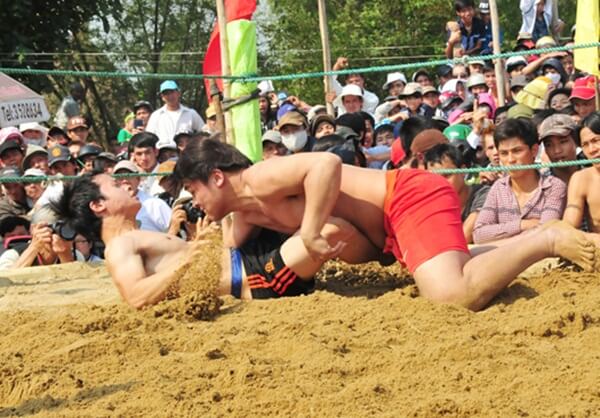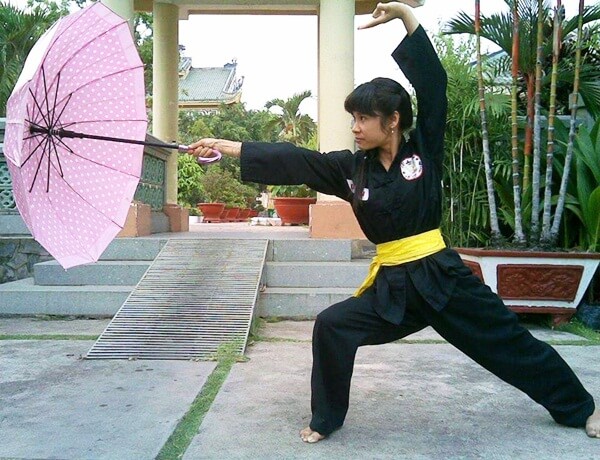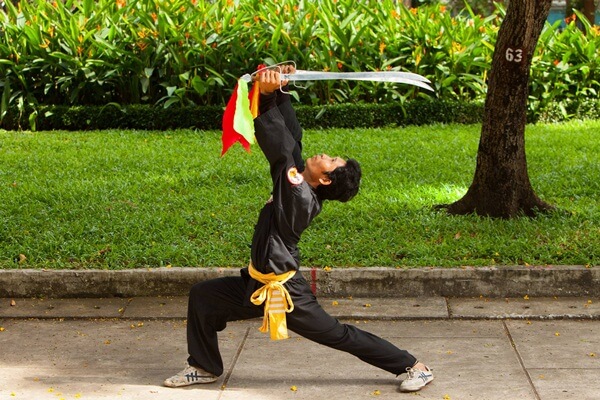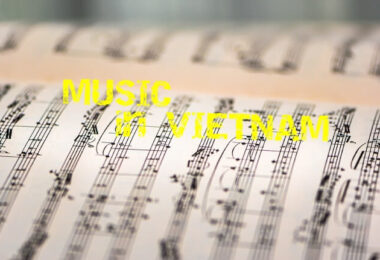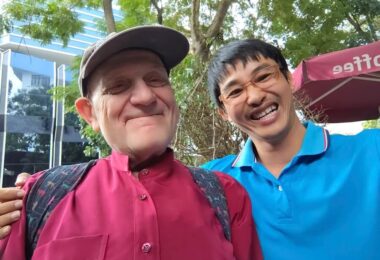The Vietnamese people are proud to be the land of martial arts formed and developed over thousands of years with building and defending the country.
Today, we will research the top five martial arts in Vietnam which influence this art section in the local life.
1. Vovinam being the pride of Vietnamese martial art
Developing History of Vovinam
Vovinam, also known as Việt Võ Đạo in Vietnamese, was the name of master Nguyen Loc born in 1936. After a long period of quiet activity, he started opening it in 1938 to publicize this martial art.
At the same time, he proposed the rules to motivate students to always renew themselves, and towards physical and mental well-being.
Around 1970, Vovinam was founded by Professor Phan Hoang who developed it in Europe and began to be widely taught throughout Vietnam.
Nowadays, this martial art has been developed in plenty of places around the world. And, Vovinam Federation was born in 2007. During the next five years, the International Vovinam Federation, the Asian Vovinam Federation, and the Southeast Asian Vovinam Federation were respectively established, marking the sharp development of Vovinam.
In 2011, Vovinam was honored to be presented in the official competition program at the 26th SEA Games for the first time.
Among the martial arts of Vietnam, Vovinam is the biggest and most developed one with a lot of students in over 40 countries around the world.
Vovinam Character Traits
Vovinam was developed based on martial arts and national wrestling, and taken the quintessence of other international martial arts, such as Chinese Kungfu, Japanese, and Korean martial arts. Vovinam’s skills are quite rich, diverse with unique tacts.
The highlight of Vovinam is pragmatism. Instead of spending much time training and pounding basic moves, Vovinam martial artists are directly guided by the coach to use skills to escape from being attacked, such as basic counterattacks, skills of punching, kicking, falling… right from the first training sessions.
This method is a fairly new thinking of the martial artist Nguyen Loc in the late 1930s, to help students defend themselves effectively. That pragmatism was not only suitable for the social situation at that time but also more reasonable and valuable for today’s times. It is because students both practice martial arts to improve their health and protect themselves yourself from the potential dangers of modern life.
The main address: 31 Su Van Hanh Street, Ward 3, District 10, Ho Chi Minh City, Vietnam
2. Nhat Nam Martial Art: The long-standing quintessence of Vietnamese
Nhat Nam History
Nhat Nam is one of the martial arts with the longest history of development in Vietnam. Its ancestral land is located on currently Thanh Hoa, Nghe An Province (Vietnam).
Over thousands of years of building and defending the country, the skills of Nhat Nam martial arts have been handed down and continuously improved.
In addition, Nhat Nam also exchanges and acquires the good things of other traditional Vietnamese martial arts, making it more unique and suitable for the body, stature, and features of the Vietnamese people.
Nhat Nam Features
Nhat Nam martial art has a large scale and big organization. With a massive skill system and an in-depth mental method, Nhat Nam martial art creates a solid foundation for students to fight and deal with each other.
The internal strength system of the Nhat Nam sect is based on the operation of qi and blood, psychophysiological features, and muscle movement.
Maximizing your own strength and taking advantage of the opponent’s power to hit the opponent is the basic rule of Nhat Nam martial art.
Special exercises to practice include snake hand, claw hand, bunch hand. Higher are the lessons Ma Quyen (Magic fist), Ao Quyen (Unvisual Movement), Hoa Quyen (Flower Movement).
A typical weapon of Nhat Nam martial art is velvet skill, using two-headed silk with heavy objects to fight; both have the flexibility to catch the enemy’s weapons and can destroy the target in various ways.
Besides learning movements and fighting skills, Nhat Nam martial art learners also study Tam Phap (Thinking Skills). These experiences are in fighting, training, and dealing with other people, with many different principles.
Address: Hanoi, Vietnam
3. Nam Hong Son martial art
Developing History of this martial art
In 1920, Nam Hong Son sect was founded by Master Nguyen Nguyen To, with the meaning: Nam is Vietnamese martial arts, Hong is Shaolin Hong Gia, a Chinese martial art, and Son is solidity and grandeur like mountains. This sect is to restore and spread the martial spirit of the Vietnamese people.
The late master Nguyen Nguyen To was studied from masters Han Bai, Cu Ton and Ba Cat, who were good at the Vietnamese skills in martial arts. Then, he skillfully combined the Shaolin with these Vietnamese martial arts, creating the martial art of Nam Hong Son.
Nam Hong Son Characteristics
In addition to the combination of martial arts of Chinese and Vietnamese sects, Nam Hong Son still preserves a few ancient martial arts exercises belonging to the martial art competition program of the Nguyen Dynasty (1802 – 1945).
Technically, the masters of Nam Hong Son remain faithful to the original curriculum.
- For the first three years, students train Chinese martial arts, including standstill methods, basic skills, and movements, such as Long Ho Quyen (Tiger Movement), Tu lo Doan Quyen (Four roads with short stick movement), Thao Ma Quyen, Phuong Vu Quyen (Phoenix Dancing Movement), etc.
- In the following years, the students learn the Vietnamese traditional martial arts includes exercises, such as Lao Mai Quyen (Old Apricot Movement), Ngoc Tran Ngan Dai, etc., and they are also combined with qigong and internal Gong exercises.
Currently, with its growing scale and organizational system, the sect has thousands of students who regularly practice across the country. Even some dojos have reached out to operate outside the country. That affirms more clearly the important role of the sect in the Vietnamese traditional martial arts.
Address: Van Hoi Village, Bach Dang Commune, Thuong Tin District, Hanoi City, Vietnam
4. The Traditional Wrestling Fighting
Wrestling History
Wrestling (Đấu Vật) was a very well-known sport among Vietnamese farmers in the past. In the early days of Spring or the summer festivals in the countryside, wrestling is an indispensable activity of the locals. Especially on the Lunar New Year’s Holidays, wrestling creates more excitement for the festival atmosphere.
When wrestling drums start as having the power to attract everyone in the village, all are eager to surround the arena of the village.
Wrestling, in addition to entertainment and fun, is also a useful sport, helping young people in the village become stronger, more energetic, courageous, to keep the village, keep rice and keep the country.
Since ancient times, wrestling has become a custom, a good tradition of the Vietnamese nation.
Wrestling Features
Wrestling is a folk martial art, not sophisticated in rituals, but tactics and playing techniques are drawn over many generations. To this day, it is hard to learn all the skills in wrestling to have a winning match.
To practice wrestling, first of all, the wrestlers have to train how to be physically strong, have strong arms and legs, how to stand and defend firmly.
In addition, they have to practice how to fall to avoid injury, how to avoid and escape for fighters.
Each place has its rituals expressed through typical dances such as Flower Dance, Xe Dai, or Crane Dance also known as Ra Giang (Appearing in front of the public). This ritual is a respectful ceremony of the wrestlers. Also, it is a warm-up form of the wrestler, as well as a way of performing the gentle skills to the audience, creating a healthy atmosphere of excitement before entering the real fight.
Many festival wrestlings are held around Vietnam during the lunar new year. In which, the wrestling in Lang Sinh, Thua Thien Hue, Vietnam is the most famous and exciting.
5. Ba Tra Tan Khanh Martial Art
Ba Tra Tan Khanh Developing History
Tan Khanh Ba Tra is one of the traditional Vietnamese martial arts. The sect originated from Binh Dinh Province (Vietnam) and has been refined by masters for generations in the new land of Southern Vietnam, Tan Khanh village (now Tan Phuoc Khanh town, Binh Duong province), and Binh Chuan village (now in Thuan An District, Binh Duong province).
In the middle of the 19th century, during the reign of King Tu Duc (1848 – 1883), the uprising of the villagers of Tan Khanh against the old mandarins. Nowadays, plenty of indigenous people are still very proud of this event and always mention it associated with the name of a woman named Vo Thi Tra.
Vo Thi Tra was very good at Tay Son martial art, led the uprising for 10 years from 1850, and ended when the French invaded three provinces in South Vietnam. Therefore, this land, including Tan Khanh village and Binh Chuan village, is also known as “Ba Tra land”.
And, from here, people call the traditional martial art from Tan Khanh and Binh Chuan “Tan Khanh Ba Tra”. At that time, this martial art school was considered one of the very few famous traditional martial art centers in South Vietnam. Vo Binh Dinh and martial art Tan Khanh Ba Tra are also famous in Vietnam.
Tan Khanh Ba Tra Features
The Tan Khanh Ba Tra martial art maintains almost all the basic skills of the martial art of the Tay Son sect from Binh Dinh Province, including famous songs such as Ngoc Tran, Lao Mai Quyen, Than Dong Quyen, …, the stick and nunchaku lessons such as Tan Nhat, Tu Ton, Than Dong, Giang Hoa… and various weapon lessons, such as Sieu Thai Duong, Sieu Thai Am, Song Kiem, Truong Thuong…
However, the masters have adjusted and improved the techniques of the move to suit the new land and at the same time increase the efficiency, faster and stronger.
The highlight feature of Tan Khanh Ba Tra martial art is a coordinated attack, combining foot and arm techniques to disrupt the opponent’s defense as well as help the attack to be highly effective.
Arms and legs go with a straight line, with the power to stop an opponent’s attack. This special feature helps the students of Tan Khanh Ba Tra martial art to be able to fight in all situations.
With a long development and diverse skill systems, martial art has been the pride of the Vietnamese people.
Besides the names mentioned above, Vietnamese martial arts also includes various sects with distinct traditional beauty, such as Tay Son Binh Dinh (Binh Dinh Martial Art), Binh Dinh Gia (Binh Dinh), Bach Ho Lam (Da Nang), Lac Viet Vo Dao (Hanoi), Thieu Lam Hong Gia (Saigon).
Frequently asked about the Vietnamese martial arts:
When is the best age to start practicing the Vietnamese martial arts?
According to many martial art instructors, children from the age of 6 can learn martial arts, because they can begin remembering martial art movements. However, the practice will be somewhat difficult, and it takes a lot of train for children to grasp martial arts’ techniques.
At the age of 12-15 years, the brain hemisphere is very well developed, which is the most appropriate time to learn martial arts because there is enough awareness and the body is thriving.
Can a girl practise the Vietnamese traditional martial arts?
Yes, she can. The traditional martial arts in Vietnam are strong, and gentle and flexible. Most of traditional sects are suitable for both boys and girls.
If you find a good teacher, he will know which lessons of the martial arts are good for each person.

